In an age where security is a top priority, the impact of surveillance cameras on public safety cannot be overlooked. With brands like Ring, Nest, Arlo, Wyze, and SimpliSafe leading the way in innovative security solutions, these cameras provide a sense of peace and protection for individuals and communities alike. Whether it’s monitoring your front porch for package deliveries or safeguarding public spaces, the use of surveillance cameras has become an integral part of our daily lives. From advanced features like facial recognition to the convenience of remote access, these cameras offer a new level of security and peace of mind. As we explore the various brands and their surveillance camera offerings, it’s clear that these technological advancements play a vital role in enhancing public safety.
The Importance of Surveillance Cameras
Preventing Crime
Surveillance cameras play a crucial role in preventing crime and improving public safety. The presence of cameras acts as a deterrent to potential criminals, significantly reducing the chances of illegal activities taking place. When criminals are aware that they are being monitored, they are more likely to think twice before committing a crime.
Moreover, the visibility of surveillance cameras serves as a constant reminder that illegal behavior will not go unnoticed. This awareness creates a sense of accountability within the community and discourages individuals from engaging in criminal activities. By effectively deterring crime, surveillance cameras contribute to the overall safety and security of neighborhoods, businesses, and public spaces.
Assisting with Investigations
Surveillance cameras are valuable tools in assisting law enforcement agencies with investigations. In the unfortunate event of a crime occurring, the footage captured by these cameras can provide crucial evidence that helps identify perpetrators and establish the sequence of events. This evidence not only strengthens the case against the criminals but also ensures a fair and accurate investigation.
Furthermore, surveillance camera footage can be instrumental in corroborating eyewitness testimony or dispelling false accusations. The technology allows investigators to review the video recordings in detail, potentially uncovering additional information that might have been missed in real-time. By aiding investigations, surveillance cameras help bring justice to victims and maintain public trust in the criminal justice system.
Monitoring Public Areas
Surveillance cameras play a vital role in monitoring public areas, ensuring the safety of both residents and visitors. In busy city centers, cameras help monitor pedestrian traffic, detect suspicious activities, and respond promptly to emergency situations. By providing real-time surveillance, these cameras enable law enforcement agencies to intervene quickly and prevent potential threats from escalating.
Public transportation hubs such as train stations, bus terminals, and airports also benefit from surveillance camera systems. These cameras help monitor passenger flows, detect suspicious behaviors, and maintain order within the facility. In the event of an incident or emergency, security personnel can swiftly identify and respond, minimizing any potential harm to the public.
Additionally, surveillance cameras are increasingly being deployed in parks, recreational areas, schools, universities, hospitals, and healthcare facilities. These cameras help ensure the safety of individuals in these public spaces, deterring criminal activities and providing valuable evidence in case of incidents.
Types of Surveillance Cameras
Indoor Cameras
Indoor surveillance cameras are designed to monitor the interior of buildings, ensuring the safety and security of both residential and commercial spaces. These cameras are commonly used in homes, offices, retail stores, and other establishments where monitoring the interior environment is crucial.
Indoor cameras come in various forms, including dome cameras, bullet cameras, and hidden or disguised cameras. Dome cameras are often mounted on the ceiling and offer a 360-degree view, while bullet cameras are typically wall-mounted and provide targeted coverage. Hidden or disguised cameras blend seamlessly into the surroundings, allowing for discreet surveillance.
Outdoor Cameras
Outdoor surveillance cameras are specifically designed to withstand harsh weather conditions and monitor the exterior of buildings and outdoor spaces. These cameras are essential for securing homes, businesses, parking lots, and public areas.
Outdoor cameras are built with sturdy, weather-resistant enclosures that protect them from rain, dust, and extreme temperatures. They are equipped with features such as infrared technology for night vision, motion detection, and pan-tilt-zoom functionality to capture a wide range of activity in outdoor environments.
Technological Advancements in Surveillance Cameras
High-Resolution Video
Advancements in surveillance camera technology have led to significant improvements in video quality. High-resolution cameras now capture crisp and clear images, allowing for better identification and recognition of individuals and objects. These cameras enable law enforcement to retrieve critical details from recorded footage, enhancing the effectiveness of investigations and the likelihood of successful prosecutions.
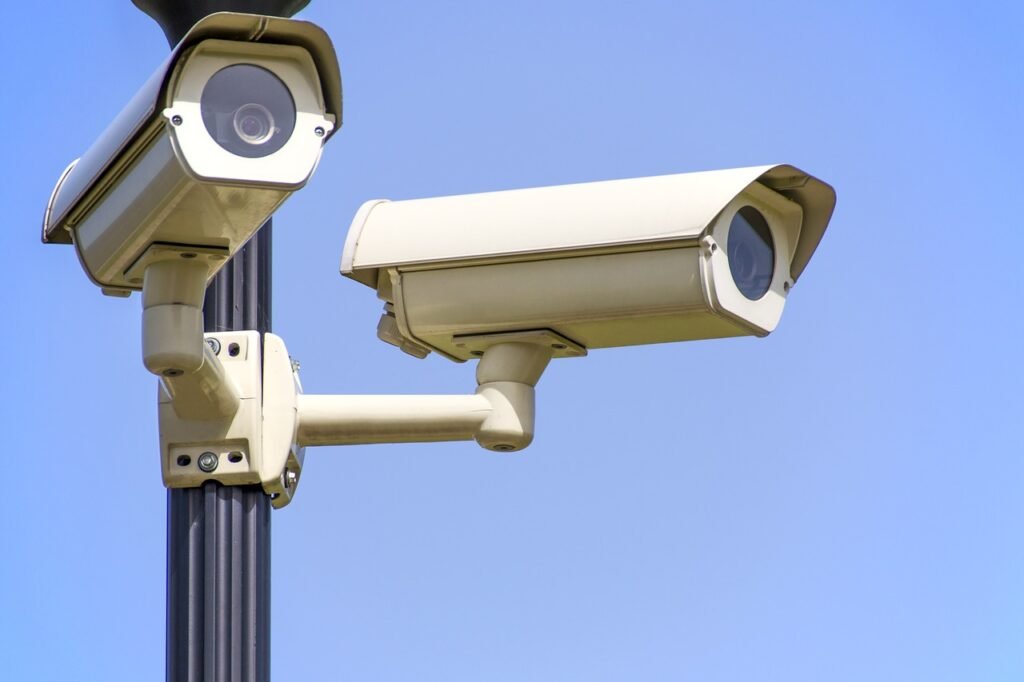
Night Vision
Night vision capabilities have revolutionized surveillance camera systems, ensuring round-the-clock monitoring and enhanced security. Infrared (IR) technology allows cameras to capture clear images and videos even in low-light or pitch-dark conditions. This feature is particularly crucial for outdoor surveillance, as it ensures continuous monitoring and detection in areas where traditional lighting may not be available.
Pan-Tilt-Zoom Functionality
Surveillance cameras equipped with pan-tilt-zoom (PTZ) functionality offer the ability to rotate horizontally and vertically, as well as zoom in on specific areas of interest. PTZ cameras provide a comprehensive field of view and can be remotely controlled to focus on specific locations or track moving objects. This feature is especially valuable in large areas such as parking lots or city centers, where the ability to capture details or follow suspicious activities is crucial.
Motion Detection
Motion detection technology has become increasingly prevalent in surveillance cameras. These cameras use sensors to detect any movement within their field of view, triggering automated responses such as recording footage, sounding alarms, or alerting security personnel. Motion detection helps filter out irrelevant footage and focuses on capturing events that are of immediate interest. It not only conserves storage space but also ensures that potential threats are promptly addressed.
Smart Home Integration
Surveillance cameras are being integrated into smart home systems, allowing homeowners to control and monitor their cameras remotely. With the advent of smart devices and internet connectivity, homeowners can access the camera feed from their smartphones or tablets, enabling real-time monitoring from anywhere. This integration also enables users to receive notifications, set up automated schedules, and integrate their cameras with other smart home devices for enhanced security and convenience.
Popular Surveillance Camera Brands
Ring
Ring is a well-known brand in the surveillance camera market, offering a range of indoor and outdoor camera options. Known for their easy installation and user-friendly interface, Ring cameras provide reliable and high-quality video surveillance. Ring’s connected ecosystem also includes doorbell cameras, which further enhance the security of homes and provide added convenience for users.
Nest
Nest, a subsidiary of Google, is a leading brand that specializes in smart home devices, including surveillance cameras. Nest cameras seamlessly integrate into the smart home ecosystem and offer advanced features such as facial recognition, intelligent alerts, and the ability to differentiate between people, pets, and objects. With high-resolution video and cloud storage options, Nest cameras are known for their excellent video quality and user-friendly interfaces.
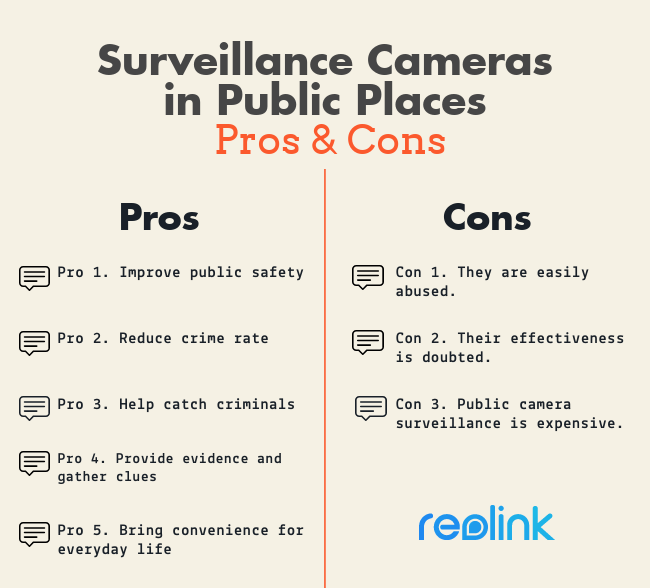
Arlo
Arlo is renowned for its wireless and battery-powered surveillance camera systems. Ideal for both indoor and outdoor use, Arlo cameras offer flexibility in terms of placement and installation. With features like high-definition video, motion detection, and two-way audio, Arlo cameras provide reliable surveillance even in remote locations. The brand also offers subscription plans for cloud storage, ensuring that recorded footage is securely stored.
Wyze
Wyze is a popular brand that focuses on providing affordable surveillance camera options without compromising on quality. Wyze cameras offer high-definition video, night vision capabilities, and motion detection at an affordable price point. With a user-friendly mobile app, cloud storage options, and compatibility with voice assistants, Wyze cameras are an excellent choice for those on a budget.
SimpliSafe
SimpliSafe is recognized for its comprehensive home security systems, which include surveillance cameras as a crucial component. SimpliSafe cameras offer features such as motion sensors, night vision, and two-way audio. The brand emphasizes easy installation and integration with the SimpliSafe ecosystem, providing a cohesive security experience for homeowners.
Eufy Security
Eufy Security specializes in wireless surveillance camera systems, offering both indoor and outdoor options. With high-resolution video, advanced motion detection, and long battery life, Eufy Security cameras provide reliable and continuous monitoring. The brand also emphasizes data privacy and offers local storage options, ensuring that users have control over their recorded footage.
Blink
Blink, a brand under Amazon’s umbrella, offers affordable and easy-to-use surveillance cameras. Known for their wireless and battery-powered cameras, Blink provides flexibility in terms of placement and installation. With features such as motion detection, HD video quality, and cloud storage, Blink cameras are an attractive choice for those seeking affordable yet reliable surveillance options.
August Home
August Home is widely recognized for its smart home products, including surveillance cameras. August Home cameras offer features such as live streaming, two-way audio, and integration with the August Home ecosystem, creating a seamless smart home experience. With their sleek design and advanced functionalities, August Home cameras provide both security and convenience for homeowners.
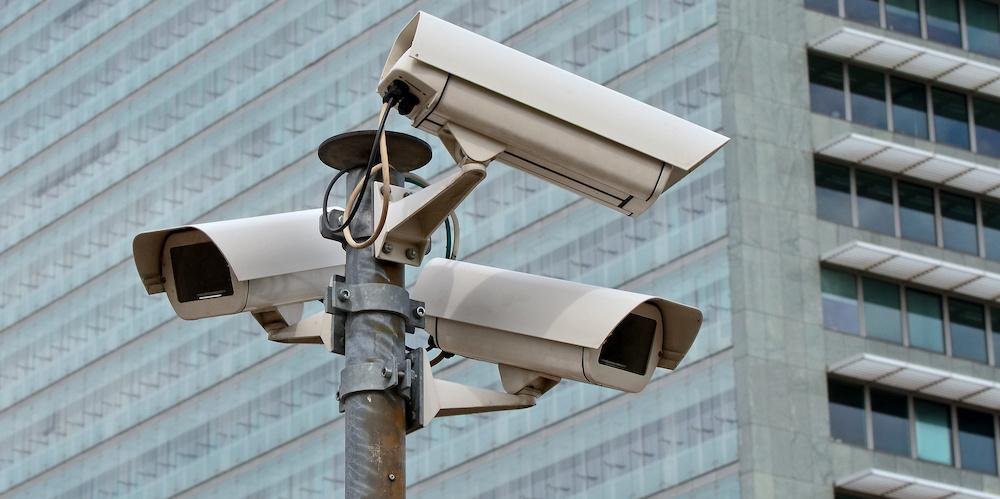
Honeywell Home
Honeywell Home offers a wide range of surveillance camera options, catering to both residential and commercial needs. Honeywell Home cameras provide high-quality video, advanced motion detection, and ease of installation. The brand focuses on delivering reliable and secure surveillance systems that meet the requirements of various environments, ensuring the safety and security of homes and businesses.
Ring Alarm
Ring Alarm, a subsidiary of Ring, offers a comprehensive home security system that includes surveillance cameras as part of its ecosystem. Ring Alarm cameras seamlessly integrate with other Ring devices and provide reliable monitoring and intelligent alerts. With a user-friendly mobile app and cloud storage options, Ring Alarm cameras ensure that homeowners can protect their property and loved ones with ease.
Surveillance Camera Features to Consider
Video Quality
When choosing a surveillance camera, video quality should be a significant consideration. High-resolution cameras capture clear and detailed footage, enhancing the ability to identify individuals or objects. Look for cameras that offer at least 1080p resolution or higher for optimal video quality.
Storage Options
Storage options are essential for recording and retrieving footage from surveillance cameras. Many cameras offer cloud storage, allowing users to access recorded videos remotely. However, some cameras also provide local storage options, such as SD cards or network-attached storage (NAS), which offer greater control over data privacy and storage capacity.
Field of View
The field of view refers to the area that the camera can cover. Cameras with wider fields of view can monitor larger areas, reducing the number of cameras required for comprehensive surveillance. Consider the specific area you want to monitor and choose a camera with an appropriate field of view to capture all relevant activity.
Connectivity
Surveillance cameras rely on various connectivity options to transmit video footage and receive commands. The most common connectivity options include Wi-Fi, ethernet, or cellular connection. Ensure that your chosen camera is compatible with your desired connectivity option and offers stable and reliable connectivity for seamless surveillance.
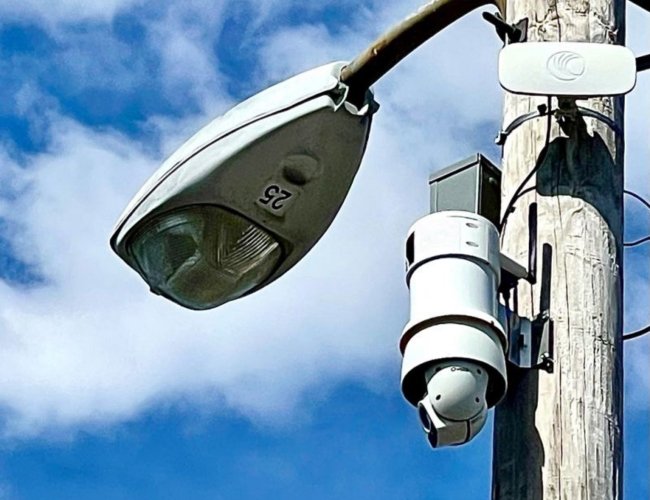
Power Source
Surveillance cameras can be powered through different means, including wired or wireless options. Wired cameras require power cables and are typically more reliable in terms of continuous power supply. On the other hand, wireless cameras offer flexibility in terms of placement but require regular battery changes or charging. Consider your specific requirements and choose a power source that suits your needs.
Weather Resistance
When installing outdoor surveillance cameras, it is essential to choose cameras that are designed to withstand varying weather conditions. Look for cameras with sturdy, weather-resistant enclosures and an appropriate Ingress Protection (IP) rating that certifies their ability to withstand dust, water, and extreme temperatures. This ensures that the cameras can continue functioning reliably regardless of weather changes.
Public Opinion on Surveillance Cameras
Privacy Concerns
The use of surveillance cameras raises legitimate concerns about privacy. Some individuals worry that constant surveillance infringes upon their privacy rights and creates a culture of surveillance in public spaces. It is crucial to strike a balance between public safety and individual privacy when implementing surveillance camera systems. Transparency, clear guidelines, and regulations can help address these concerns and ensure responsible use of surveillance technology.
Impact on Public Behavior
Surveillance cameras have been known to have a positive impact on public behavior. When individuals are aware of being monitored, they are more likely to adhere to societal rules and norms, discouraging criminal activities. The presence of cameras can also enhance the feeling of safety and security, encouraging public engagement and usage of public spaces.
Perceived Effectiveness
Public opinion on the effectiveness of surveillance cameras is often positive, with many individuals believing that they contribute significantly to crime prevention. The visible presence of cameras acts as a deterrent, making criminals think twice before committing a crime. Moreover, surveillance camera footage has been instrumental in solving numerous criminal cases, leading to successful prosecutions and bringing justice to victims.
Surveillance Cameras in Public Spaces
City Centers
City centers are bustling with activity, making them prime locations for the deployment of surveillance cameras. The presence of cameras helps monitor pedestrian traffic, detect suspicious activities, and respond promptly to any emergency situations. Surveillance cameras in city centers contribute to creating a safer environment for both residents and visitors, deterring criminal activities and ensuring public safety.
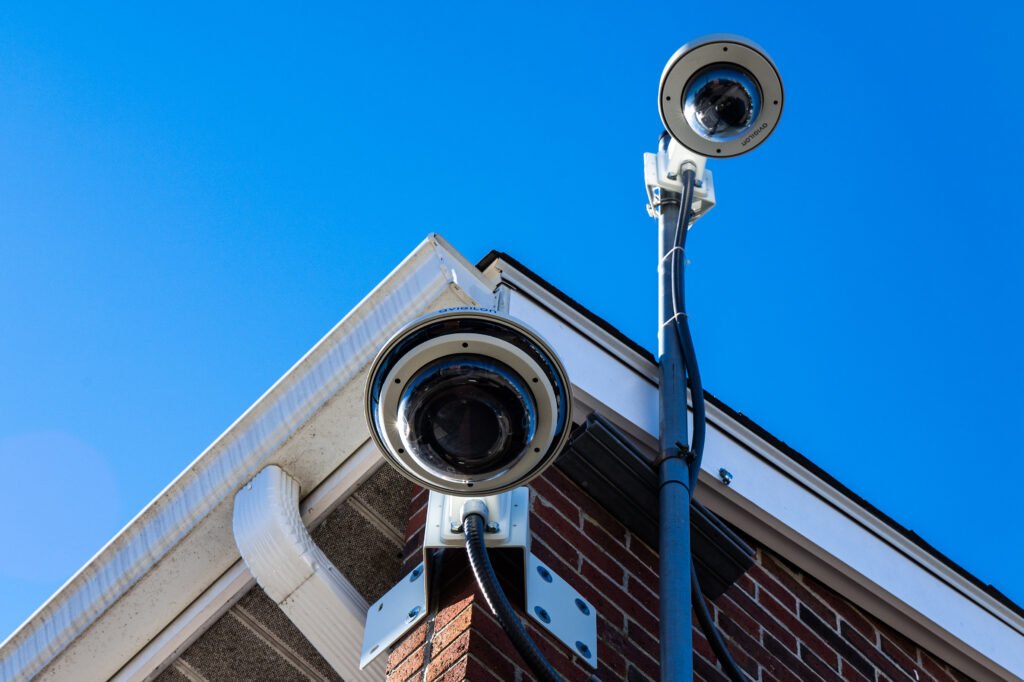
Public Transportation Hubs
Public transportation hubs such as train stations, bus terminals, and airports are critical areas that benefit from surveillance camera systems. These cameras help monitor passenger flows, detect suspicious behaviors, and maintain order within the facility. By providing real-time surveillance, these cameras enable security personnel to intervene quickly and prevent potential threats from escalating.
Parks and Recreational Areas
Surveillance cameras also play a vital role in enhancing the safety and security of parks and recreational areas. These cameras help monitor activities, detect potential threats, and ensure the well-being of individuals utilizing these spaces. By providing surveillance, parks and recreational areas can create a sense of security for visitors and deter criminal activities.
Schools and Universities
Surveillance cameras have become increasingly important in educational institutions, ensuring the safety of students, faculty, and staff. These cameras help monitor entrances, hallways, and common areas, deterring unauthorized individuals and preventing potential threats. The presence of cameras in schools and universities provides peace of mind and reassurance to the community, allowing for a focused and secure learning environment.
Hospitals and Healthcare Facilities
Hospitals and healthcare facilities require surveillance cameras to ensure the safety and well-being of patients, employees, and visitors. These cameras are strategically placed to monitor entrances, waiting areas, and high-traffic zones. Surveillance cameras in healthcare facilities contribute to maintaining order, preventing incidents, and swiftly responding to emergencies, thus creating a secure environment for all stakeholders.
Surveillance Cameras and Crime Prevention
Deterrence
The presence of surveillance cameras acts as a powerful deterrent to potential criminals. When individuals are aware that they are being watched, they are less likely to engage in criminal activities, fearing the consequences of their actions being caught on camera. By creating a fear of being identified and apprehended, surveillance cameras significantly reduce the opportunities for criminal behavior to occur.
Identification and Apprehension
Surveillance camera footage plays a crucial role in identifying and apprehending criminals. In the unfortunate event of a crime, the recorded footage can provide valuable evidence that helps law enforcement agencies identify the perpetrators and build a robust case against them. The ability to visually identify individuals involved in criminal activities is a crucial step towards holding them accountable for their actions.
Reduced Response Times
Surveillance cameras contribute to reduced response times when incidents occur. Real-time monitoring enables security personnel or law enforcement agencies to swiftly intervene and prevent a situation from escalating. With the ability to remotely access camera feeds and assess the severity of an incident, responders can arrive at the scene prepared and equipped to handle the situation effectively.
Surveillance Cameras and Law Enforcement
Collaboration with Police
Surveillance cameras foster collaboration between law enforcement agencies and the community. When cameras are strategically placed in public spaces or neighborhoods, they provide valuable information and evidence to assist police investigations. By working together, law enforcement agencies and surveillance camera systems maximize their effectiveness and improve overall public safety.
Evidentiary Value
Surveillance camera footage has significant evidentiary value in legal proceedings. The recorded footage can serve as irrefutable evidence, enhancing the chances of successful prosecutions and bringing justice to victims. Surveillance cameras provide an unbiased account of events, helping establish facts and debunk false accusations, thus ensuring a fair investigation and trial process.
Challenges and Limitations
While surveillance cameras have proven to be effective tools for law enforcement, they also face certain challenges and limitations. These include blind spots, camera malfunctions, and limited field of view. Additionally, the quality of the camera footage can be affected by factors such as lighting conditions or camera positioning. Despite these limitations, the benefits of surveillance cameras outweigh their shortcomings, and technological advancements continue to address these challenges.
The Future of Surveillance Cameras
Artificial Intelligence and Facial Recognition
Artificial intelligence (AI) and facial recognition technologies are poised to revolutionize surveillance camera systems. AI-powered cameras can analyze video footage in real-time, detect anomalies, and alert security personnel to potential threats or suspicious behavior. Facial recognition technology enhances the identification and tracking capabilities of surveillance cameras, allowing for rapid identification of individuals of interest.
Cloud-Based Surveillance
Cloud-based surveillance offers numerous advantages over traditional storage methods. Storing surveillance footage in the cloud allows for seamless remote access, enhanced security, and data redundancy. Cloud storage also provides scalability, as it can accommodate expanding storage needs without requiring physical infrastructure upgrades.
Privacy Regulation and Ethics
As surveillance camera technology advances, concerns about privacy and ethical considerations arise. It is essential to establish robust privacy regulations and ethics guidelines to ensure that surveillance cameras are used responsibly and transparently. Balancing the need for public safety with individual privacy rights and securing informed consent is crucial for maintaining public trust and acceptance of surveillance camera systems.
In conclusion, surveillance cameras play a vital role in preventing crime, assisting investigations, and monitoring public areas. Technological advancements have led to improved video quality, night vision capabilities, and smart home integration in surveillance cameras. Various popular brands such as Ring, Nest, and Arlo offer reliable surveillance camera options. When considering surveillance cameras, it is important to evaluate features like video quality, storage options, and weather resistance. Public opinion on surveillance cameras highlights concerns about privacy but acknowledges their positive impact on public behavior and the perceived effectiveness in crime prevention. Surveillance cameras find extensive use in city centers, public transportation hubs, parks, schools, and hospitals to enhance public safety. They serve as a deterrent, aid in identifying criminals, and reduce response times. Collaboration with law enforcement, evidentiary value, and overcoming challenges are crucial aspects of surveillance cameras in law enforcement. The future of surveillance cameras involves AI and facial recognition technology, cloud-based surveillance, and responsible privacy regulation. By understanding the significance of surveillance cameras and considering their features, individuals and communities can make informed decisions to ensure safety and security.
